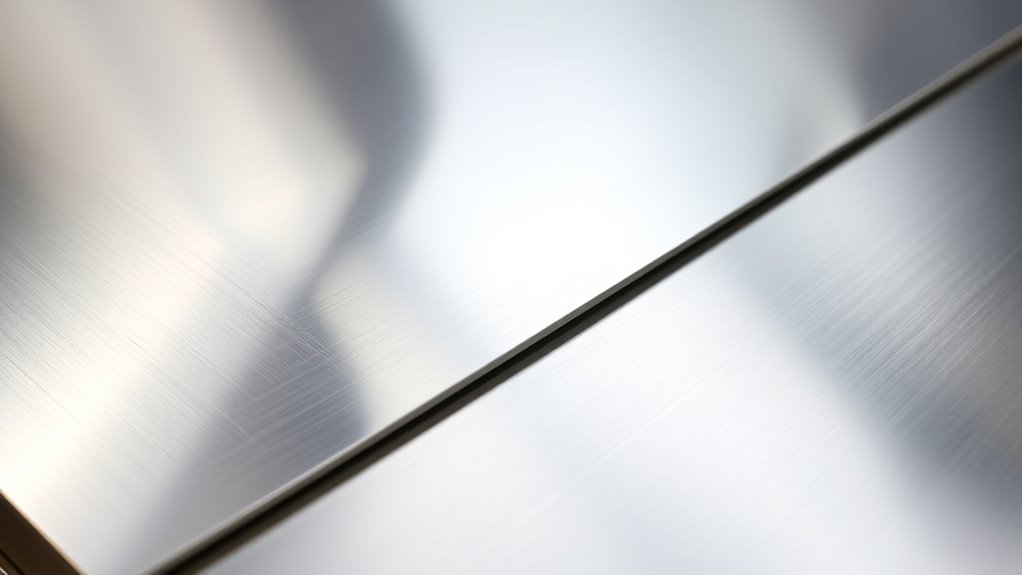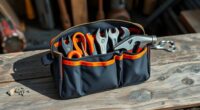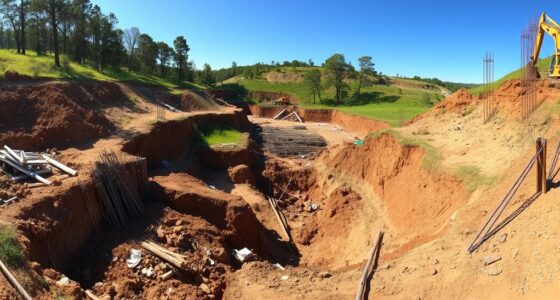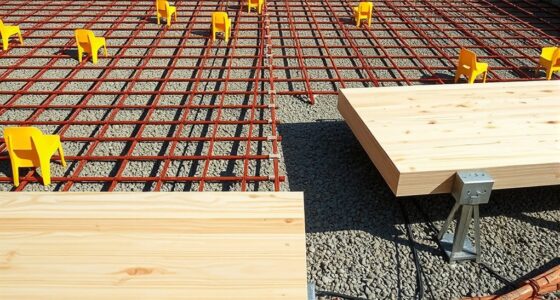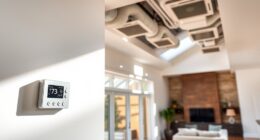To achieve a mirror finish, you need to precisely control edge thickness and maintain strict level tolerances. Carefully measure and adjust the edges using calibrated tools like micrometers or laser systems to guarantee consistency. Keep the surface level and smooth by minimizing vibrations and environmental interference. Combining these practices reduces surface irregularities, allowing for a flawless, reflective quality. Focus on these details, and you’ll discover even more effective techniques to perfect your finish.
Key Takeaways
- Maintain uniform, thin edges through precise honing or filing to reduce stress points and improve surface smoothness.
- Use calibrated measurement tools like micrometers or laser systems to monitor edge thickness accurately.
- Enforce tight level tolerances with stable fixtures to ensure a flat, consistent surface for a mirror finish.
- Regularly calibrate equipment and control environmental factors to prevent measurement inaccuracies and surface irregularities.
- Combine consistent machining with continuous measurement and adjustment for optimal edge and level control, achieving a high-quality mirror finish.
Understanding the Significance of Edge Thickness in Surface Quality
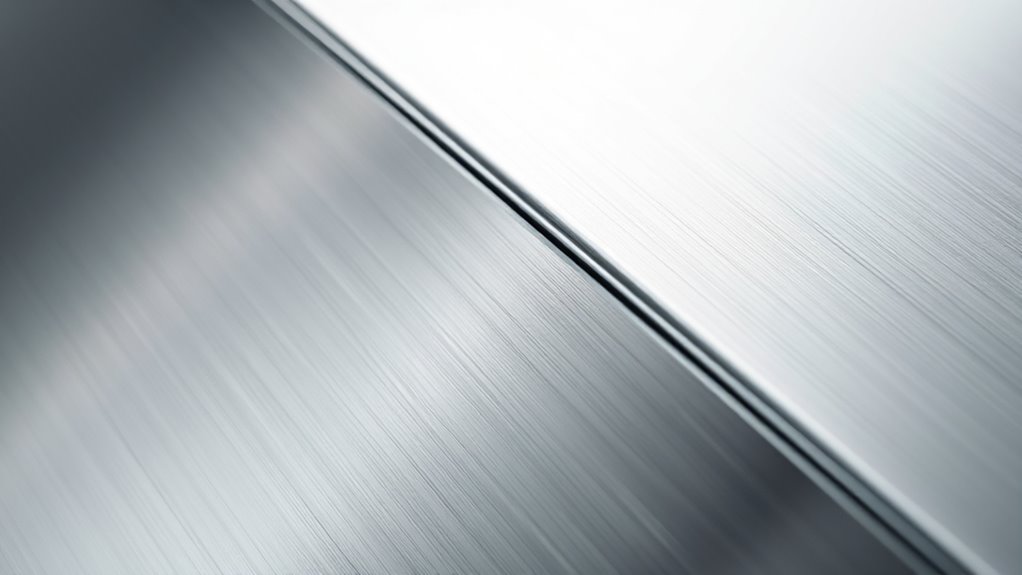
Edge thickness directly impacts the surface quality of a finished product because uneven or inconsistent edges can lead to roughness, burrs, or defects. When edges are too thick or uneven, they create stress points that compromise the surface’s smoothness. Thin, uniform edges promote a cleaner, more polished appearance and reduce the risk of imperfections during finishing processes. Maintaining precise edge thickness ensures better control over material removal and polishing, resulting in a mirror-like finish. Inconsistent edges can also cause tool chatter or uneven material flow, leading to surface irregularities. Additionally, vetted edge quality is essential for achieving professional-grade surface finishes. By paying close attention to edge thickness throughout manufacturing, you can achieve a higher quality surface with fewer defects, ultimately improving both the product’s appearance and its functional performance.
The Role of Level Tolerances in Achieving a Reflective Finish
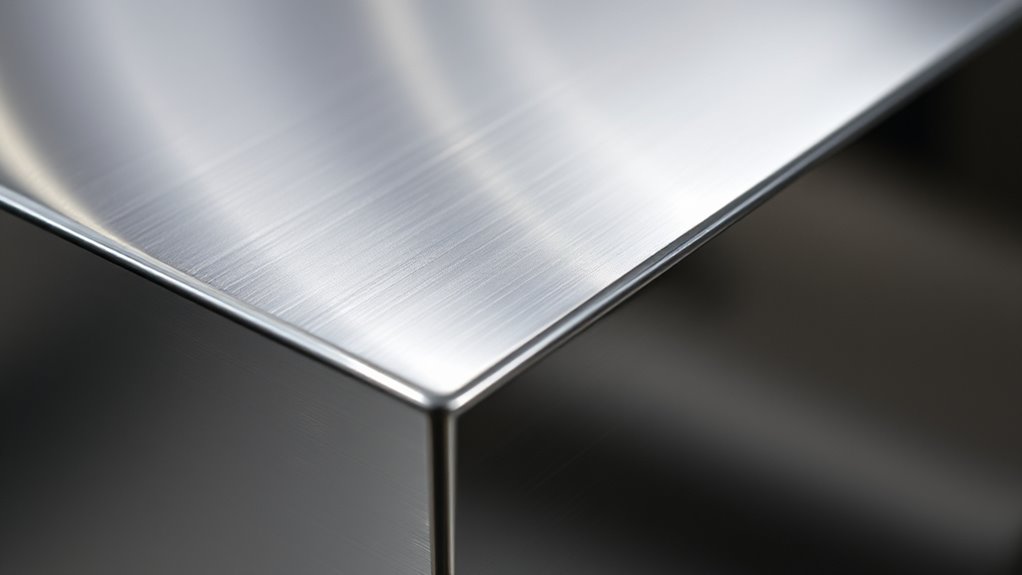
Level tolerances play a pivotal role in achieving a smooth, mirror-like finish by guaranteeing that surface planes remain consistent throughout the manufacturing process. When tolerances are tight, you prevent uneven surfaces or dips that can distort reflections. Precise control of these tolerances minimizes variations in surface height, reducing the need for extensive polishing later. If tolerances are too loose, surface irregularities become more apparent, making it harder to achieve a true mirror finish. Maintaining strict level tolerances helps you produce a uniform, flat surface, which is essential for high-quality reflective finishes. By managing these tolerances carefully, you assure your workpiece meets the desired aesthetic and functional standards, ultimately saving time and effort in the finishing stage.
Techniques for Measuring and Adjusting Edge Thickness Effectively
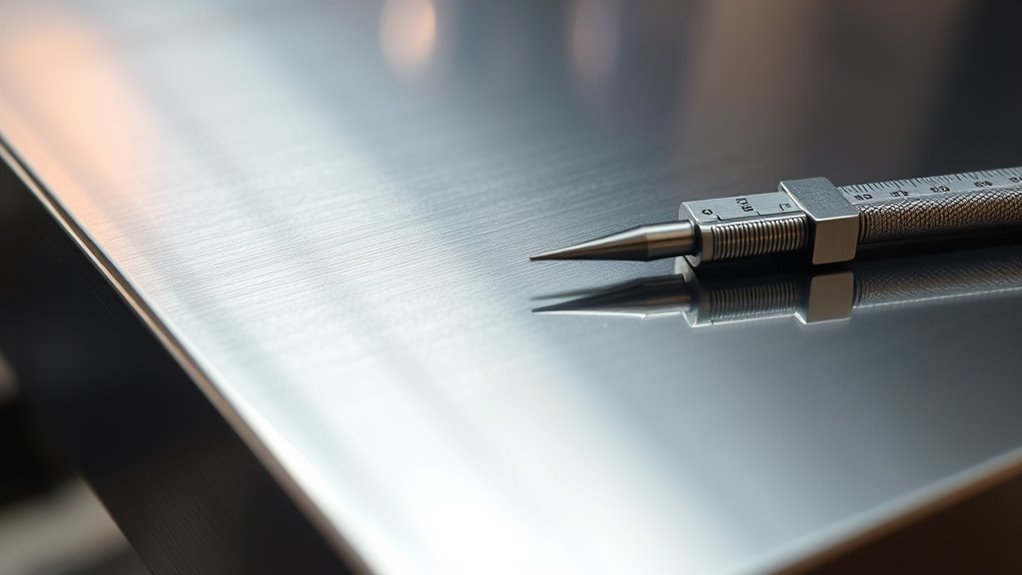
To guarantee consistent edge thickness, you need reliable measurement techniques combined with precise adjustment methods. Begin by using a calibrated micrometer or digital caliper to check the thickness at multiple points along the edge. Ensure you record these measurements accurately to identify any variation. For more detailed analysis, consider employing a laser measurement system, which provides high-precision data quickly. Once you identify uneven areas, adjust the edge by carefully honing or filing, removing small amounts at a time. Use a straightedge or level to verify the edge’s flatness after each adjustment. Regularly re-measure throughout the process to confirm progress. Additionally, understanding the importance of edge thickness in achieving a mirror finish can help guide your precision. This combination of precise measurement and careful adjustment guarantees you maintain the desired edge thickness, ultimately leading to a mirror-like finish.
Common Challenges and Solutions in Maintaining Proper Level Tolerances
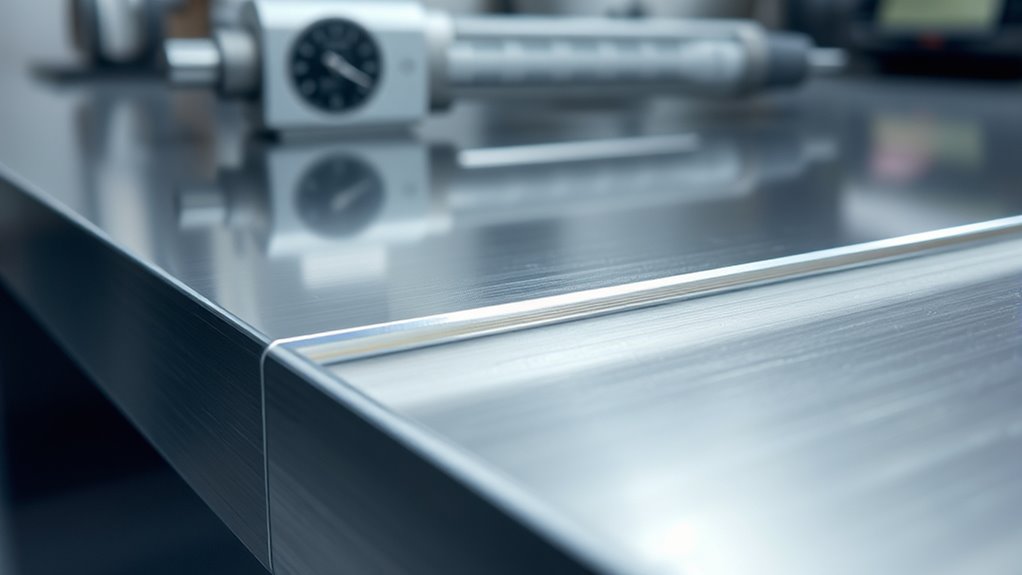
Maintaining proper level tolerances often presents unexpected hurdles that can disrupt your workflow. One common challenge is inconsistent measurements caused by environmental factors like temperature fluctuations or vibrations, which can skew readings. To counter this, verify your workspace is stable and use calibrated instruments regularly. Another issue is operator error, such as misreading instruments or applying uneven pressure during adjustments. Training and double-checking measurements can minimize mistakes. Surface imperfections or debris can also interfere with level accuracy, so keep your work surface clean and smooth. Finally, equipment wear or misalignment might lead to false readings. Regular maintenance and calibration are essential to keep your tools precise. Additionally, incorporating AI-driven tools can help analyze measurement data more accurately, reducing human error. Addressing these challenges proactively helps you maintain consistent level tolerances and achieve a mirror finish.
Best Practices for Combining Edge Thickness Control and Level Precision
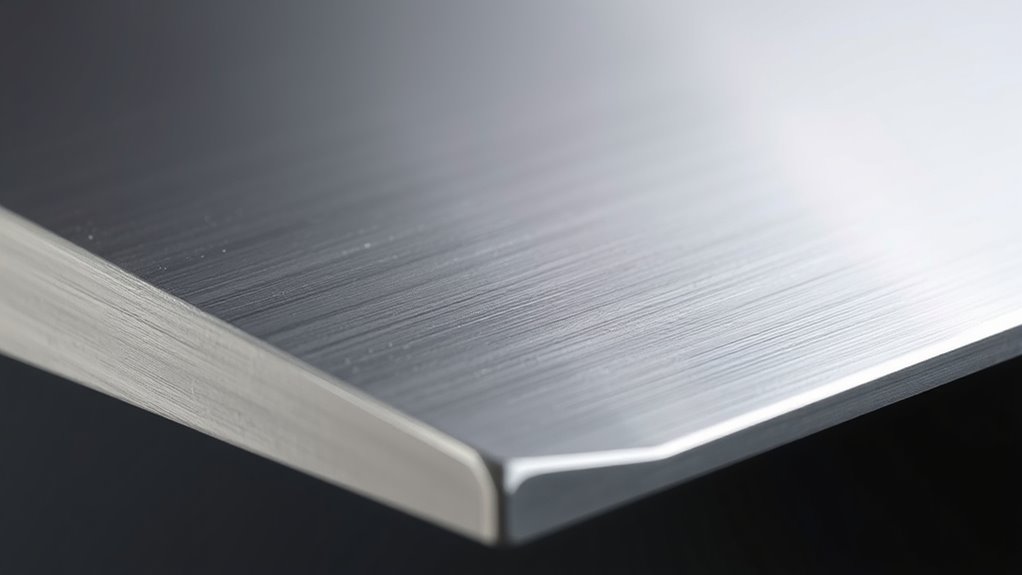
Combining edge thickness control with level precision requires a strategic approach that guarantees both aspects work seamlessly together. Start by establishing clear specifications for both parameters, ensuring they align with your project’s quality standards. Use calibrated tools to measure edge thickness and level accuracy regularly, catching deviations early. Apply consistent machining or finishing techniques, such as precision grinding or polishing, to maintain uniformity. Prioritize proper fixture setups to minimize movement and errors during processing. Communicate clearly with your team about the importance of balancing these factors, avoiding shortcuts that compromise either edge quality or levelness. Keep detailed records of measurements and adjustments to identify trends and improve your process continuously. By integrating these practices, you’ll achieve a flawless, mirror-like finish with reliable consistency.
Frequently Asked Questions
How Does Environmental Humidity Affect Edge Thickness and Level Tolerances?
Environmental humidity can influence your edge thickness and level tolerances by causing materials to expand or contract slightly. High humidity levels may lead to swelling, making edges thicker or less precise. Conversely, low humidity can dry out materials, causing shrinkage and potential warping. You should monitor humidity levels carefully and control the environment to maintain consistent edge quality and tolerances, ensuring a smooth, mirror-like finish.
What Tools Are Best for Real-Time Monitoring of Edge Thickness?
You should use laser micrometers or non-contact optical sensors for real-time monitoring of edge thickness. These tools provide precise, continuous measurements without touching the material, reducing interference and ensuring accuracy. Laser micrometers are especially effective for high-speed production lines, allowing you to quickly detect deviations. Integrating these sensors with your control system helps maintain consistent tolerances, ensuring your edges stay within desired specifications for a flawless mirror finish.
Can Automation Improve Consistency in Achieving Mirror Finish Surfaces?
Automation definitely improves consistency when achieving mirror finish surfaces. It removes human variability, ensuring uniformity across each piece. While some might worry about initial costs, the long-term benefits—fewer reworks and higher quality—far outweigh upfront expenses. With automated systems, you can maintain precise control over finishing processes, leading to a flawless, mirror-like surface every time. Embracing automation helps you deliver top-tier quality reliably and efficiently.
How Do Material Properties Influence Edge Thickness Adjustments?
Material properties directly influence how you adjust edge thickness because harder materials resist shaping and may require more precise or aggressive techniques, while softer materials are easier to modify but risk over-thinning. You need to contemplate hardness, ductility, and thermal conductivity to make accurate adjustments. By understanding these properties, you can tailor your approach, ensuring consistent edge thickness and achieving a high-quality mirror finish without damaging the material.
Are There Industry Standards Dictating Acceptable Edge Thickness Variations?
Yes, industry standards do specify acceptable edge thickness variations. You should refer to specific guidelines like ISO or ASTM standards, which set tolerances based on the material and application. These standards help ensure consistent quality, safety, and performance. It’s important that you follow these regulations closely during manufacturing and quality control processes to maintain compliance and achieve a mirror finish with precise edge dimensions.
Conclusion
To achieve that mirror finish, you need to master both edge thickness and level tolerances. Keep a keen eye on measurements, adjust as needed, and don’t let challenges like warping or uneven grinding throw you off. Think of it like tuning a vintage guitar — precision is everything. With consistent effort and attention to detail, you’ll turn your work into a shining masterpiece that even the most discerning eye would admire.
